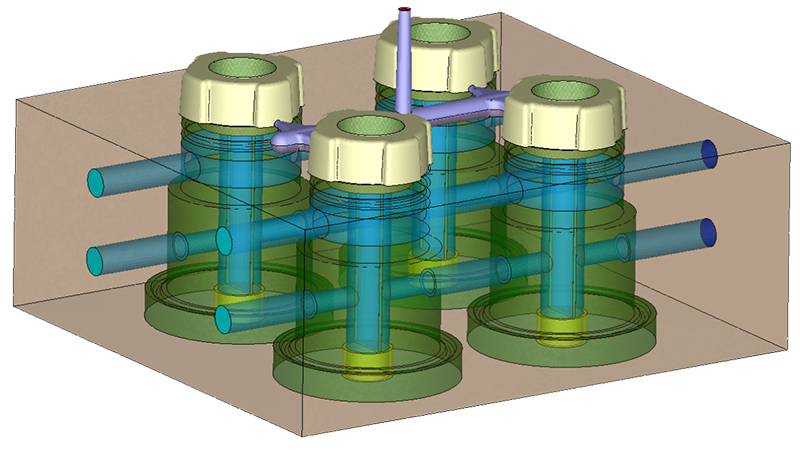Injection molds are designed and built to allow parts to be produced from various polymers and to be utilized for a variety of applications. A mold design team must possess the ability to evaluate and determine the optimal mold steel for each mold component to effectively produce high quality plastic parts.
How do mold designers choose their steels? There are numerous factors that should be considered for the individual components. Here are some questions that mold designers need to answer for optimal mold steel selection:
- Is the mold design for a prototype, a small series production or a full production mold?
- How many production cycles will the mold be used for?
- What type of polymer will be injected into the mold?
- Will the mold be used for a low-pressure and unfilled commodity material or for a high pressure and engineered glass or carbon-filled material?
- Must the mold be corrosion resistant because of certain polymer materials or the molding environment?

Understanding material mechanical properties is helpful in evaluating mold steel options. For example, properly sizing mold components for the tool assembly will depend on differential thermal expansion coefficients of the different mold steel materials. Tensile strength is also an important aspect in mold steel selection. For example, aluminum and copper alloys would need to be evaluated for component fatigue and compressive stress requirements to ensure proper mold functionality.
The cooling phase of the molding cycle is the longest and therefore the most important time period of the molding cycle. Decreasing the cooling time of a polymer inside the mold improves overall productivity. Therefore, mold designers should not only be optimizing cooling line layouts based on part geometries but also have the ability to evaluate various tool steels to improve heat removal.
It is a general industry-wide practice to use aluminum for low-production or prototype tooling because of cost. But aluminum also has a high thermal conductivity and will therefore carry heat energy quickly out of the tool.
Injection molding is a process of heat exchange. Managing this process is critical to part quality and minimizing productions costs. Performing mold thermal analyses on new tooling allows mold designers to evaluate potential design and process challenges prior to mold building and production.
Depending on polymer materials, injection pressures, and production cycles, designers can determine what mold steels to use that will reduce production costs and improve molded part quality.
Follow this link to see an excerpt from the “Mold Steel Selection” lesson.

Questions, Comments or Feedback…
You must be logged in to post a comment.